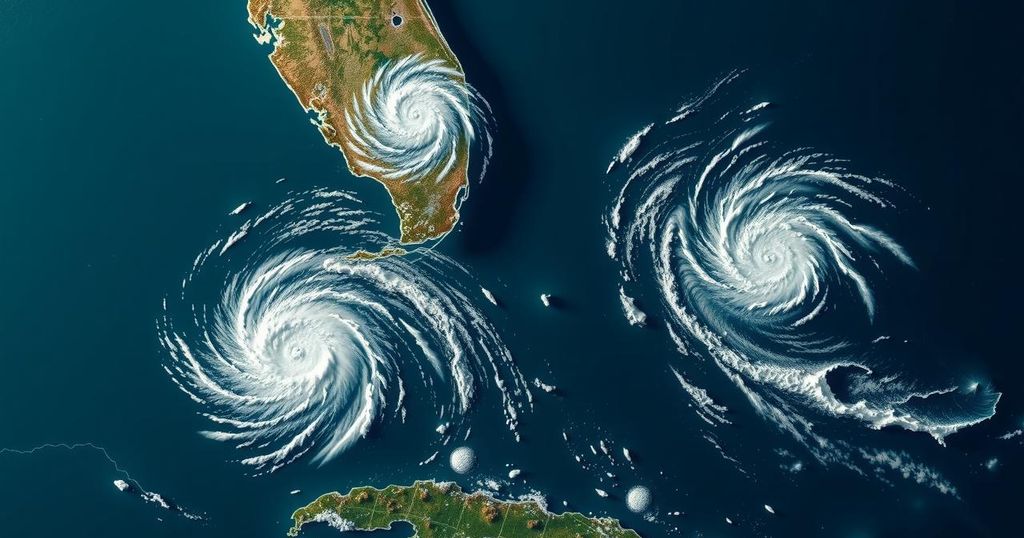Florida has only recorded three hurricanes making landfall in November: an unnamed hurricane in 1935, Hurricane Kate in 1985, and Hurricane Nicole in 2022. Warm ocean temperatures this November have heightened the likelihood of storm development, showcasing the changing dynamics of hurricane activity in late fall.
As Florida braces for the potential impact of a storm expected to become Hurricane Sara, it is noteworthy that the state has experienced only three hurricanes making landfall in November since records began. These storms include an unnamed hurricane in 1935, Hurricane Kate in 1985, and Hurricane Nicole in 2022. Uncharacteristically, the ocean’s temperatures remain elevated, thereby increasing the likelihood of tropical storm development well into November, a month typically associated with the decline of hurricane activity. The recent hurricanes that made landfall in Florida highlight the variability of late-season storms. Hurricane Nicole reached land as a Category 1 storm on November 10, 2022, causing substantial damage and resulting in indirect fatalities. Similarly, Hurricane Kate, stronger at Category 3, made landfall on November 22, 1985, wreaking havoc across the state, as did the Yankee hurricane, which struck on November 4, 1935. Such events illustrate the shift in climatic conditions, leading to an unusual increase in tropical storm activities during late fall. In addition to hurricanes that struck Florida in November, several others affected the region but did not make landfall as hurricanes. Notably, Hurricane Eta in 2020 reached a powerful Category 5 capacity before weakening to a tropical storm upon making landfall. Similarly, Hurricane Otto and other significant storms display the unpredictability of storm patterns, emphasizing the need for ongoing monitoring and preparedness efforts from both state and federal agencies. The Atlantic hurricane season officially lasts from June 1 to November 30; however, the hurricane risk does not completely dissipate after this period. As hurricanes like Hurricane Siri potentially make landfall this coming week, the impact of climate change on ocean temperatures must be taken seriously, as they likely contribute to this shifting hurricane activity.
Understanding the frequency of hurricanes striking Florida in November requires an appreciation of the climatic patterns influencing storm development. Traditionally, the Atlantic hurricane season is most active from June to November. The ocean’s surface temperature plays a critical role in fueling tropical development; however, an unsettling trend reflects warmer ocean temperatures persisting later into the season. The observed rise in ocean heat content indicates wider implications for hurricane activity, compounding risks for Florida residents.
In conclusion, the increasing frequency of hurricanes impacting Florida in November poses significant concerns for both preparedness and response strategies. The historical context reveals only three hurricanes making landfall in November, yet the unusual warmth of ocean temperatures hints at a potential for more hurricane activity in late-season months. Continued vigilance and understanding of climate patterns are essential as Florida navigates the complexities of enhanced hurricane threats.
Original Source: www.gainesville.com






